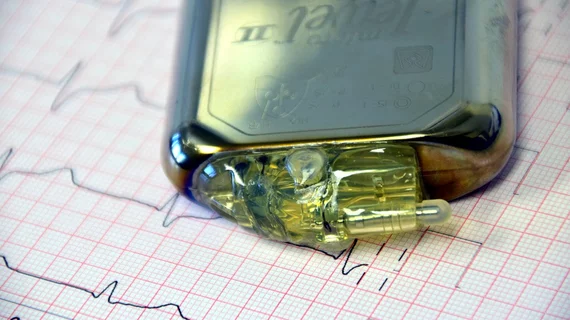Bionic pacemaker could reverse-remodel hearts affected by HF
A novel pacemaker designed to mimic a patient’s organic breath increased blood flow to the heart in a study of individuals with heart failure, according to research published in the journal Thorax.
A key component of heart rate variability—one of our best indicators of cardiac function—is respiratory sinus arrhythmia, or RSA. First author Erin L. O’Callaghan and colleagues said traditional pacemakers don’t account for RSA, instead pacing the heart at a constant, monotonous rate, but loss of RSA is associated with an increased risk of sudden cardiac death and poorer CV outcomes.
O’Callaghan et al. attempted to replicate RSA in a novel pacemaker built to read a patient’s body’s unique breathing signals. The so-called bionic pacemaker was able to speed up and slow down the heart with every organic breath.
“We used state-of-the-art high-resolution echocardiography to monitor the heart’s performance during respiratory sinus arrhythmia pacing in rats with heart failure,” O’Callaghan said in a release. “Within two weeks there was a 20% increase in blood pumped by the heart, which was not the case when we used conventional pacemakers.”
The researchers found that cardiac output and stroke volume were higher in rats paced with RSA compared to those with monotonic pacing, owed in large part to an improvement in systolic function that persisted beyond the pacing treatment period. The team said their results suggest RSA pacing could reverse-remodel the hearts of patients with heart failure.
“Our findings give hope for heart patients and may revolutionize the future design of cardiac pacemakers,” senior author Julian F. R. Paton said in the release. “Our next step in the research is to find out if respiratory sinus arrhythmia can reverse heart failure in human patients as it has done in rats.”

